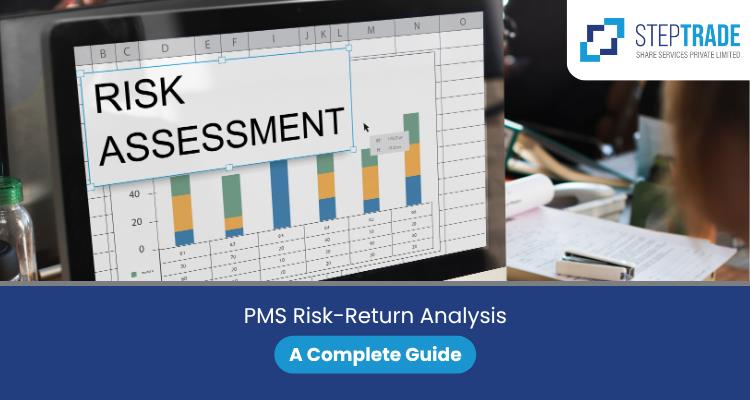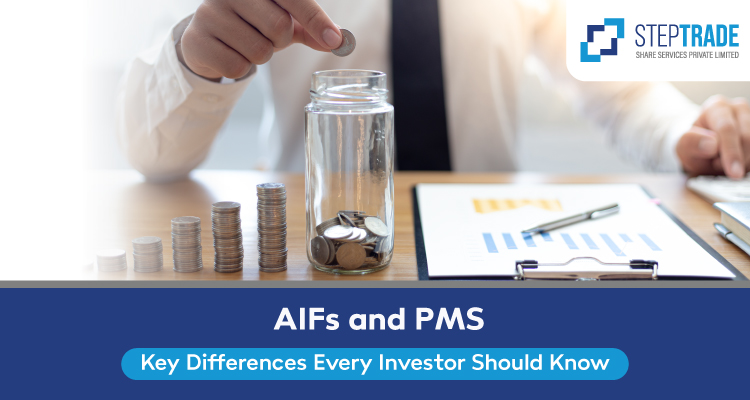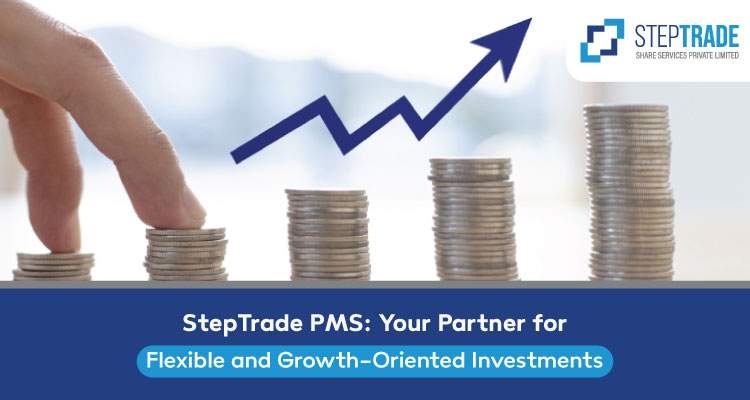Introduction
Portfolio Management Services (PMS) are increasingly popular among high-net-worth individuals in India due to their customized strategies and professional oversight. However, a strong return potential comes with market risk. PMS risk-return analysis helps investors evaluate these schemes using data-backed metrics like Sharpe ratio, drawdown, and alpha—making it easier to choose a PMS aligned with their financial goals.
PMS risk-return analysis provides investors with a scientific framework to evaluate portfolio performance beyond simple returns. This comprehensive guide explores how to assess PMS investments, understand risk factors, and make informed decisions in India's evolving wealth management landscape.
What is PMS Risk-Return Analysis?
PMS risk-return analysis is a systematic evaluation of portfolio performance that considers both potential gains and associated risks. Unlike traditional return calculations, this analysis incorporates volatility metrics, market correlation, and risk-adjusted performance indicators.
The analysis typically examines:
- Historical returns across different market cycles
- Portfolio volatility and standard deviation
- Risk-adjusted metrics like Sharpe ratio and alpha generation
- Maximum drawdown periods and recovery time
This comprehensive approach helps investors understand whether a PMS's returns justify the risks taken. For instance, a PMS generating 15% annual returns with 25% volatility may be less attractive than one offering 12% returns with 10% volatility.
Why Should You Analyze PMS Risk and Return?
Analyzing PMS returns versus risks is crucial because raw returns alone don't tell the complete investment story. Two portfolios with identical 20% annual returns can have vastly different risk profiles, making one significantly more attractive than the other.
Key reasons for conducting risk-return analysis include:
- Investment Safety: Understanding maximum potential losses helps in portfolio allocation decisions. A PMS with frequent 15-20% drawdowns may not suit conservative investors, regardless of long-term returns.
- Performance Consistency: Risk analysis reveals return consistency patterns. Steady 12-15% annual returns are often preferable to volatile 30% gains followed by 20% losses.
- Benchmark Comparison: Risk-adjusted returns allow fair comparison between PMS and market indices. A PMS outperforming Nifty by 3% while taking 50% more risk may not be the optimal choice.
- Future Expectations: Historical risk patterns help set realistic return expectations and prepare for market volatility periods.
What Affects PMS Risk Levels?
PMS risk levels are primarily influenced by asset allocation strategy, sector concentration, portfolio turnover, and market timing decisions. Understanding these factors helps investors assess potential volatility before committing capital.
Primary Risk Factors:
- Sector Exposure: PMS heavily concentrated in cyclical sectors like banking, real estate, or commodities typically exhibit higher volatility. Diversified sectoral allocation reduces concentration risk.
- Market Cap Focus: Small-cap and mid-cap focused PMS generally carry higher risk compared to large-cap portfolios. However, they also offer greater return potential during favorable market conditions.
- Investment Style: Growth-oriented PMS tend to be more volatile than value-focused strategies. Momentum-based approaches can experience significant swings during market reversals.
- Leverage Usage: PMS employing leverage or derivatives amplify both returns and risks. While leverage can enhance gains during bull markets, it magnifies losses during downturns.
- Portfolio Concentration: PMS holding 15-20 stocks face higher concentration risk compared to those with 40-50 holdings. However, concentrated portfolios allow fund managers to capitalize on their best investment ideas.
How Do PMS Manage Risk in India?
In India, PMS employ multiple risk management techniques including diversification, position sizing, stop-loss mechanisms, and hedging strategies. SEBI regulations mandate specific risk disclosure and monitoring frameworks for PMS providers.
Risk Management Strategies:
- Diversification: Most PMS maintain exposure across 8-12 sectors and 30-50 stocks to reduce concentration risk. Some schemes also diversify across market capitalizations and investment themes.
- Position Sizing: Professional fund managers typically limit individual stock exposure to 3-8% of total portfolio value. This prevents any single stock from significantly impacting overall performance.
- Hedging Instruments: Advanced PMS use index futures, options, and currency hedging to protect against market downturns. However, hedging costs can impact net returns.
- Risk Monitoring: Regular portfolio stress testing, Value-at-Risk (VaR) calculations, and scenario analysis help identify potential vulnerabilities before they materialize.
- Dynamic Allocation: Flexible PMS adjust equity-debt allocation based on market conditions, reducing equity exposure during overvalued markets and increasing allocation during corrections.
Key Metrics for PMS Risk-Return Analysis
Essential metrics for evaluating PMS performance include Sharpe ratio, alpha generation, maximum drawdown, beta, and information ratio. These quantitative measures provide objective comparison frameworks across different PMS.
Critical Performance Metrics:
- Sharpe Ratio: Measures risk-adjusted returns by dividing excess returns by portfolio volatility. A Sharpe ratio above 1.0 indicates good risk-adjusted performance, while ratios above 1.5 are considered excellent.
- Alpha Generation: Represents portfolio returns above benchmark performance after adjusting for market risk. Positive alpha indicates fund manager skill in generating excess returns.
- Maximum Drawdown: Shows the largest peak-to-trough decline experienced by the portfolio. Lower drawdowns indicate better downside protection and capital preservation.
- Beta Coefficient: Measures portfolio sensitivity to market movements. Beta above 1.0 indicates higher volatility than the market, while beta below 1.0 suggests lower volatility.
- Information Ratio: Calculates excess returns per unit of tracking error versus the benchmark. Higher information ratios indicate consistent outperformance with controlled volatility.
PMS vs Mutual Fund vs AIF: Risk-Return Comparison
| Parameter | PMS | Mutual Funds | AIF |
|---|---|---|---|
| Minimum Investment | ₹50 lakhs | ₹100 – ₹500 | ₹1 crore |
| Risk Level | Medium to High | Low to Medium | High |
| Expected Returns | 12–20% annually | 8–15% annually | 15–25% annually |
| Liquidity | Moderate (T+2) | High (T+1) | Low (Lock-in periods) |
| Customization | High | None | Very High |
| Transparency | High | Medium | High |
| Tax Efficiency | Moderate | Low | High |
| Regulatory Oversight | SEBI PMS | SEBI MF | SEBI AIF |
PMS strikes an optimal balance between customization and liquidity, making it suitable for investors seeking professional management without long lock-in periods. Unlike mutual funds, PMS offers personalized strategies, while being more liquid than AIFs.
PMS for HNIs: Choosing the Right Portfolio Strategy
High-net-worth individuals should select PMS based on risk appetite, investment horizon, and financial goals rather than relying only on past performance. The right PMS strategy aligns with overall wealth management objectives and risk tolerance. Trusted wealth management firms in India help HNIs design personalized portfolio strategies that balance risk and returns while supporting long-term wealth creation.
Selection Criteria for HNIs:
- Risk Assessment: Conservative investors should prefer large-cap focused PMS with lower volatility, while aggressive investors can consider mid-cap or sector-specific strategies.
- Investment Horizon: Long-term investors (5+ years) can tolerate higher volatility for better returns, while shorter horizons require more stable, liquid strategies.
- Diversification Needs: Investors with concentrated business wealth should choose diversified PMS schemes, while those with diversified assets can consider focused strategies.
- Tax Considerations: HNIs in higher tax brackets should evaluate tax-efficient PMS strategies that optimize capital gains timing and minimize tax drag.
- Geographic Focus: India-focused PMS offer deep local market expertise, while global PMS provide international diversification benefits.
How to Evaluate PMS Performance in India?
Evaluation Framework:
- Rolling Returns Analysis: Examine 1-year, 3-year, and 5-year rolling returns to assess consistency across different market phases. Consistent performers show smaller variations in rolling return patterns.
- Benchmark Comparison: Compare PMS returns against appropriate benchmarks like Nifty 50, Nifty 500, or custom indices based on the scheme's investment universe.
- Downside Protection: Analyze performance during market corrections (2018, 2020, 2022) to evaluate downside protection capabilities and recovery speed.
- Style Consistency: Verify whether the PMS maintains its stated investment style (growth, value, momentum) across different market conditions.
- Manager Track Record: Evaluate fund manager experience, previous performance, and investment philosophy consistency over time.
PMS Performance Outlook for 2025 and Beyond
PMS are expected to benefit from India's economic growth, digital transformation, and increasing retail participation in equity markets. However, global uncertainties and interest rate cycles will continue to influence performance.
Key Trends Shaping PMS:
- SME & Microcap Exchange Growth: Specialized PMS focusing on SME and microcap companies are gaining traction as these segments offer significant growth potential with proper risk management.
- Technology Integration: AI-driven research, algorithmic trading, and robo-advisory features are enhancing PMS capabilities while reducing costs.
- ESG Integration: Environmental, Social, and Governance factors are becoming integral to investment decisions, creating new opportunities in sustainable investing.
- Regulatory Evolution: SEBI's progressive regulations are enhancing transparency while allowing innovation in PMS product structures and fee mechanisms.
- Market Depth: Growing market participation and increased FPI flows are creating better liquidity and price discovery across market segments.
Steptrade Capital's Custom PMS Solutions
Steptrade Capital provides specialized PMS solutions focused on SME & Microcap Exchange investments, combining deep sector expertise with institutional-grade risk management. Our unique positioning in the SME space provides access to high-growth companies before they transition to main board listings.
Our PMS Advantages:
- SME Expertise: With 100+ SME investments and 50+ anchor participations, we understand SME dynamics better than traditional PMS providers.
- GIFT City Benefits: Our registered FME status in GIFT City provides tax advantages and regulatory flexibility for international investors.
- Institutional Process: Despite SME focus, we maintain institutional-grade research, risk management, and compliance standards.
- Customized Strategies: Each PMS mandate is designed around client-specific -specific requirements, risk tolerance, and investment objectives.
Conclusion
PMS risk-return analysis is essential for making informed investment decisions in India's dynamic market environment. By understanding risk metrics, evaluation frameworks, and performance, investors can select PMS that align with their financial goals and risk tolerance.
The key to successful PMS investing lies in balancing return expectations with risk management, maintaining a long-term perspective, and working with experienced fund managers who understand market nuances.
For investors seeking specialized expertise in SME & Microcap Exchange investments, Steptrade Capital's proven track record and institutional capabilities make us an ideal partner for wealth creation.















